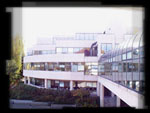

From doing the case study, our group discovered that the northside of the EWEB building is more thermally comfortable than the southside. All of the data our group collected during the case study seems to prove our hypothesis; which was that exterior temperatures are causing thermal discomfort to occupants of the EWEB building. The hobos showed that the south side is generally warmer than the north side. The surverys confirmed that people were more thermally comfortable on the north side than the south due to the difference in temperature. The CLO levels of the north side were generally higher than those of the south side. Our study ran smoothly and there weren't any discrepancies in our results.
In the future, when studying this issue, we recommend studying the east side as well as the north and south. More hobos installed over a longer period of time would produce more accurate results. We also suggest spending more time with the occupants of the building, on different days and different times of day. Studying the daylighting and HVAC systems would be beneficial as well.
In terms of thermal comfort, the only suggestions we can offer for improvements to the building are to increase the number of thermal zones in the building so more occupants can have direct control over their environment. We realize this would be more expensive but it's the only way we see for improvement, not knowing anything about the HVAC system as a whole.
The main lesson we learned from this case study is that a building
designed well above standards for the time may not necessarily continue to be as efficient over an extended period of time. Improvements in technology and changing demands on the building are just some of the factors that leading to this problem. When the building was designed it was 30% more efficient than the code required at that time, now it's undergoing renovations to increase its efficiency and reduce costs.